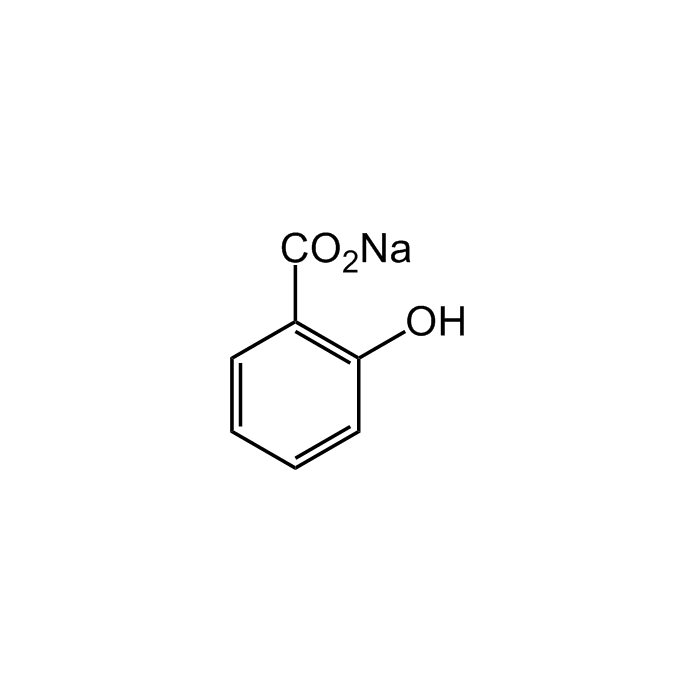Cookie Policy: This site uses cookies to improve your experience. You can find out more about our use of cookies in our Privacy Policy. By continuing to browse this site you agree to our use of cookies.
Chemodex
Sodium salicylate

| Product Details | |
|---|---|
| Synonyms | 2-Hydroxybenzoic acid sodium salt |
| Product Type | Chemical |
| Properties | |
| Formula |
C7H5O3 . Na |
| MW | 160.1 |
| CAS | 54-21-7 |
| RTECS | VO5075000 |
| Source/Host Chemicals | Synthetic. |
| Purity Chemicals | ≥99% (dried substance) |
| Appearance | White to off-white crystalline powder. |
| Solubility | Soluble in water (50mg/ml) or ethanol. |
| Identity | Determined by 1H-NMR. |
| Declaration | Manufactured by Chemodex. |
| Other Product Data |
Click here for Original Manufacturer Product Datasheet |
| InChi Key | ABBQHOQBGMUPJH-UHFFFAOYSA-M |
| Smiles | OC1=C(C(O[Na])=O)C=CC=C1 |
| Shipping and Handling | |
| Shipping | AMBIENT |
| Short Term Storage | +20°C |
| Long Term Storage | +20°C |
| Handling Advice | Protect from light and moisture. |
| Use/Stability | Stable for at least 2 years after receipt when stored at RT. |
| Documents | |
| Product Specification Sheet | |
| Datasheet |
 Download PDF Download PDF |
Sodium salicylate is a metabolite of aspirin. It is a cell-permeable, non-steroidal anti-inflammatory agent (NSAID) that interferes with TNF-induced NF-κB activation by inhibiting phosphorylation and subsequent degradation of the IκB-α protein. It selectively inhibits TNF-induced activation of p42 (ERK2) and p44 (ERK1) MAP kinases and TNF-induced activation of JNK. It induces apoptosis via p38 kinase activation and inhibits COX-2 and inducible NOS (iNOS) transcription dependent on the experimental setup. It is commonly used for its antipyretic, anti-oxidant, neuroprotective, anti-inflammatory, anti-cancer and analgesic properties.
(1) R.S. Farivar & P. Brecher; J. Biol. Chem. 271, 31585 (1996) | (2) P. Schwenger, et al.; J. Biol. Chem. 271, 8089 (1996) | (3) J.A. Mitchell, et al.; Mol. Pharmacol. 51, 907 (1997) | (4) P. Schwenger, et al.; PNAS 94, 2869 (1997) | (5) P. Schwenger, et al.; Mol. Cell. Biol. 18, 78 (1998) | (6) R. Amann & B.A. Peskar; Eur. J. Pharmacol. 447, 1 (2002) | (7) P. Thakur & B. Nehru; Neuroscience 231, 420 (2013) | (8) C. Yu, et al.; Cancer med. 7, 471 (2018)





